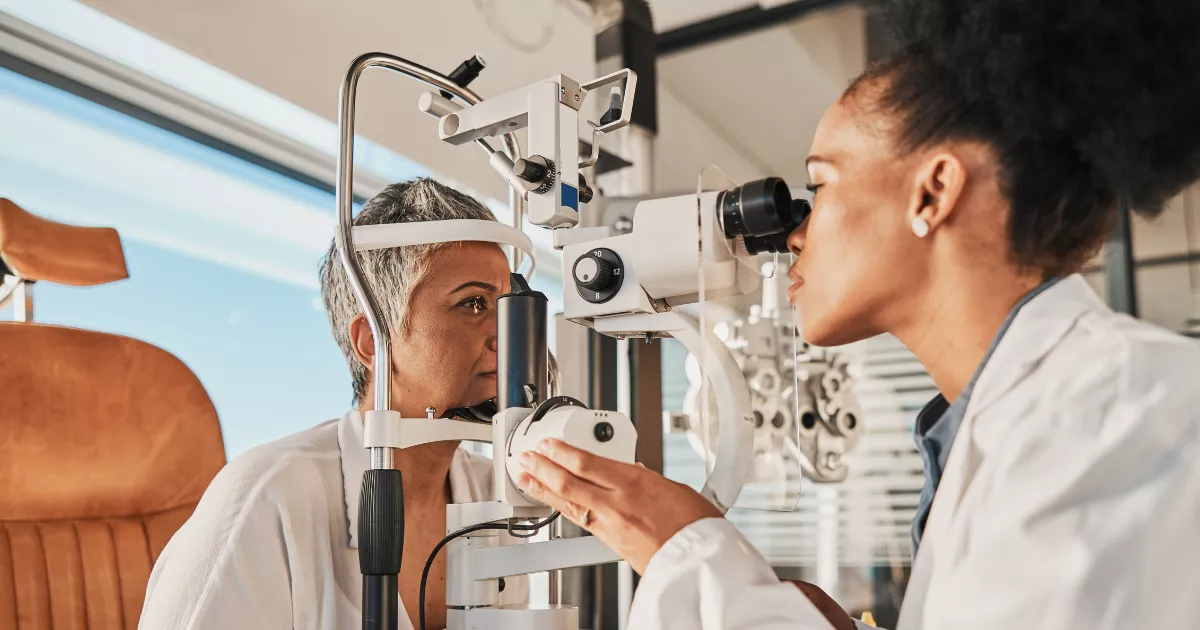
Glaucoma Awareness Month 2025: Protect Your Sight
January is Glaucoma Awareness Month, a crucial time to raise awareness about a leading cause of irreversible blindness worldwide. Affecting over 4 million adults in the United States alone, glaucoma is often called the “silent thief of sight” due to its gradual progression without noticeable symptoms in its early stages. Organizations like Prevent Blindness, The Glaucoma Foundation, the BrightFocus Foundation, and the Glaucoma Research Foundation are committed to educating the public, promoting early detection, and providing resources for those affected by this disease.
Understanding Glaucoma
Glaucoma refers to a group of eye diseases that damage the optic nerve, which is vital for healthy vision. This damage is commonly associated with elevated intraocular pressure (IOP), or internal eye pressure, but can occur even with normal eye pressure levels. The two primary types of glaucoma are:
- Open-angle. The most common form, progressing gradually over the course of years and often without symptoms.
- Angle-closure. A less common, but more acute form that can cause sudden eye pain, nausea, and vision loss.
Other types include normal-tension glaucoma, congenital glaucoma, and secondary glaucoma, which can develop due to injuries or medical conditions.
Without early detection and treatment, glaucoma can lead to significant, irreversible vision loss or blindness.
Who Is at Risk?
Glaucoma can affect anyone, but some groups are at a higher risk.
- Age. People aged 60 and older are at a higher risk, though some communities are advised to start getting tested earlier.
- Race. Black Americans are at a significantly increased risk of developing open-angle glaucoma and experiencing blindness. Asian people, particularly those of Chinese, Vietnamese, Pakistani, or Inuit descent are at highest risk for angle-closure glaucoma.
- Family history. A family history of glaucoma increases susceptibility.
- Medical conditions. Conditions such as diabetes, hypertension, and extreme nearsightedness can heighten the risk.
- Eye trauma. Past injuries or surgeries can contribute to developing glaucoma.
It’s vital to be proactive in monitoring eye health, particularly for those in these high-risk groups.
Symptoms of Glaucoma
Recognizing the signs of glaucoma can be challenging, but understanding the possible symptoms is critical for early intervention. These symptoms can vary depending on the type of glaucoma:
Open-Angle Glaucoma
Primary open-angle glaucoma is the most common form of glaucoma, affecting approximately 90% of patients. Symptoms often develop slowly and may include:
- Gradual loss of peripheral (side) vision, which may not be noticeable at first.
- Tunnel vision in advanced stages.
- Difficulty adjusting to low-light conditions.
Because these symptoms appear gradually, regular eye exams are often the only way to detect this form of glaucoma before you start to lose vision.
Angle-Closure Glaucoma
This type of glaucoma is less common but can occur suddenly and requires immediate medical attention. Symptoms include:
- Sudden, severe eye pain or headache.
- Nausea and vomiting.
- Blurred vision or halos around lights.
- Redness in the eye.
- Sudden vision loss.
Angle-closure glaucoma is a medical emergency. If you experience any of these symptoms, seek urgent care to prevent permanent damage to your vision.
Normal-Tension Glaucoma
Even when eye pressure is within normal ranges, optic nerve damage can occur. Symptoms of normal-tension glaucoma may include:
- Subtle loss of peripheral vision.
- Progression of vision impairment, which might be mistaken for aging or unrelated issues.
The earlier glaucoma is detected, the better the chances of preserving vision through treatment.
How is Glaucoma Diagnosed?
Diagnosing glaucoma requires a comprehensive evaluation by an eye care professional. Since glaucoma often progresses without obvious symptoms, routine eye exams are the most reliable way to detect the disease in its early stages. Here are the key diagnostic tests used:
- Tonometry. This test measures IOP. A device called a tonometer applies a gentle puff of air or uses a small probe to measure pressure inside the eye.
- Ophthalmoscopy. Also known as a dilated eye exam, this test examines the optic nerve for signs of damage. Using a special lens and light, the eye doctor inspects the optic nerve’s shape and color to detect abnormalities.
- Perimetry or Visual Field Test. A visual field test measures your peripheral vision to detect any blind spots. During the test, patients respond to visual cues, such as lights appearing in different areas of their visual field.
- Pachymetry. This test measures the thickness of your cornea, since corneal thickness can influence IOP readings.
- Gonioscopy. Gonioscopy examines the angle where the iris meets the cornea, to differentiate between open-angle and angle-closure glaucoma.
- Optical Coherence Tomography (OCT). OCT is an advanced imaging test that uses light waves to take detailed pictures of the retina and optic nerve, proving a clearer view of structural changes in the eye that might indicate glaucoma.
Through these diagnostic tools, your doctor can detect glaucoma, monitor its progression, and develop an appropriate treatment plan.
Treatment and Management
While glaucoma cannot be cured, it can be effectively managed to slow or halt its progression and prevent further vision loss. Treatment options are tailored to the individual based on the type and severity of glaucoma, as well as overall health. Here’s an overview of the primary treatment methods:
Medications
Prescription eye drops are the first line of treatment for most glaucoma patients. These drops reduce IOP by either decreasing fluid production in the eye or improving fluid drainage.
- Prostaglandin analogs help increase fluid outflow.
- Beta-blockers reduce fluid production.
- Alpha agonists decrease fluid production and increase drainage.
- Carbonic anhydrase inhibitors reduce fluid production.
- Rho kinase inhibitors increase fluid drainage.
It’s essential to use medications exactly as prescribed and maintain regular follow-up appointments to ensure their treatment is effective.
Laser Therapy
For patients who don’t respond well to medications or prefer alternative treatments, laser therapy can be a valuable option.
- Selective laser trabeculoplasty (SLT) targets the trabecular meshwork in the eye to improve fluid drainage.
- Laser peripheral iridotomy is used in angle-closure glaucoma to create a small opening in the iris, allowing fluid to flow freely.
These minimally invasive procedures are often done in an outpatient setting and require little downtime.
Surgical Intervention
When medications and laser therapy are insufficient to control IOP, surgery may be necessary. All surgery options are designed to improve fluid drainage and prevent fluid buildup by either clearing and widening existing drainage structures or creating new drainage pathways. Options include:
- Trabeculectomy
- Drainage implant surgery
- Minimally Invasive Glaucoma Surgery (MIGS)
Surgical options are generally reserved for advanced cases or when other treatments have failed.
Lifestyle and Self-Care
Managing glaucoma also involves lifestyle adjustments to protect overall eye health, including:
- Maintaining a healthy diet rich in antioxidants and omega-3 fatty acids
- Exercising regularly to improve blood flow to the eyes, but avoiding activities that raise IOP, such as inverted yoga poses or heavy weightlifting
- Monitoring blood pressure and other health conditions like diabetes, which can exacerbate glaucoma
- Protecting your eyes from injury with safety glasses during sports or hazardous activities
Adherence to Follow-Up Care
Glaucoma is a lifelong condition that requires consistent monitoring. Regular check-ups with an eye care professional ensure that treatments remain effective and any changes in the condition are addressed promptly.
Advances in Glaucoma Research
Ongoing research continues to bring hope for better treatments and eventual cures. Recent developments include:
- Gene therapy. Targeting genetic factors associated with glaucoma.
- Innovative drug delivery. Sustained-release devices to improve treatment adherence.
- AI in diagnosis. Artificial intelligence is being leveraged to detect early signs of glaucoma in retinal scans.
Prevent Blindness and the National Eye Institute (NEI) have been pivotal in funding and promoting these advancements.
How to Observe Glaucoma Awareness Month
Here are a few ways to participate and raise awareness this January:
-
- Get screened. Schedule a comprehensive eye exam and encourage loved ones to do the same.
- Spread awareness. Share information about glaucoma on social media using hashtags like #GlaucomaAwarenessMonth.
- Donate. Support organizations like Prevent Blindness that fund glaucoma research and offer patient resources.
- Educate others. Host educational events or webinars to inform your community about glaucoma risks and prevention.
- Use and share these and other free resources:
By increasing awareness, we can promote early detection and reduce the prevalence of glaucoma-related blindness.
Together, we can protect vision and ensure a brighter future for all.


